
by Pigeon Patrol | Jul 9, 2024 | Bird Netting
An animal sanctuary is asking people not to dye birds for use in gender reveal celebrations after taking in a bright pink pigeon.
Polly, a pigeon whose wings and feet had been dyed pink and yellow for what is believed to have been a gender reveal, was taken to Pudz Animal Sanctuary in South Killingholme this week.
Sanctuary founder Shena Fairless said birds who are dyed are not only at risk from harmful chemicals in the dye, but are also more vulnerable to predators.
She said: “It’s just for a few minutes of entertainment, then the bird has to live with that for the rest of its life”.
A pigeon that has been dyed bright pink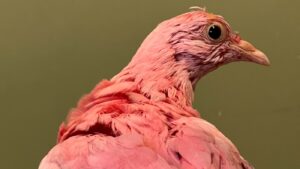
Pudz Animal Sanctuary said Polly was settling in well.
Ms Fairless said the dyeing was “just not a nice thing for it to go through” and added “you just don’t know what might happen”.
Despite Polly’s ordeal, Ms Fairless said she is settling in well at the sanctuary, adding: “She’s made some friends, she’s eating well, and she’s trying to fly.
“She’s safe, so we’ll see how she goes.”
The RSPCA also issued a similar warning about using birds in gender reveals earlier this year.
A spokesperson for the charity said they feared “social media trends could be fuelling” incidents, and said dyeing or painting their feathers could make it so birds are no longer able to fly.
Gender reveal celebrations are a way for expectant parents to announce whether their baby will be a boy or a girl and have grown in popularity over the last few years.
Pigeon Patrol
Pigeon Patrol Products & Services is the leading manufacturer and distributor of bird deterrent (control) products in Canada. Pigeon Patrol products have solved pest bird problems in industrial, commercial, and residential settings since 2000, by using safe and humane bird deterrents with only bird and animal friendly solutions. At Pigeon Patrol, we manufacture and offer a variety of bird deterrents, ranging from Ultra-flex Bird Spikes with UV protection, Bird Netting, 4-S Bird Gel and the best Ultrasonic and audible sound devices on the market today.
Canada’s top wholesaler for bird deterrent products for twelve consecutive years.
Contact us at 1- 877– 4– NO-BIRD, (604) 585-9279 or visit our website at https://www.pigeonpatrol.ca/
Bird Gone, Pigeon Gone, Pigeon problems, pigeon spikes, 1-877-4NO-BIRD, 4-S Gel, Bird Control, Pigeon Control, bird repellent, Bird Spikes, sonic bird repellent, stainless steel bird spikes, bird spikes Vancouver, Ultra Sonic Bird Control, Bird Netting, Plastic Bird Spikes, Canada bird spike deterrents, Pigeon Pests, B Gone Pigeon, Pigeon Patrol, pest controller, pest control operator, pest control technician, Pigeon Control Products, humane pigeon spikes, pigeon deterrents, pigeon traps, Pigeon repellents, Sound & Laser Deterrents, wildlife control, raccoon, skunk, squirrel deterrent, De-Fence Spikes, Dragons Den, Pigeon, Pigeon Patrol, Pigeons Roosting, Vancouver Pigeon Control, Bird Spikes, Bird Control, Bird Deterrent, Pigeon Deterrent, Surrey Pigeon Control, Pest, Seagull deterrent Vancouver Pigeon Blog, Birds Inside Home De-fence, Pigeon Nesting, Bird Droppings, Pigeon Dropping, woodpecker control, Keep The Birds Away, Birds/rats, seagull, pigeon, woodpecker, dove, sparrow, pidgeon control, pidgeon problem, pidgeon control, flying rats, pigeon Problems, bird netting, bird gel, bird spray, bird nails, bird guard, Pigeon control, Bird deterrents, Pigeon deterrents, Bird control, solutions, Pigeon prevention, Pigeon repellent, Bird proofing, Pest bird management, Pigeon spikes, Bird netting, Humane bird control, Bird exclusion, Urban bird control, Anti-roosting devices, Pigeon removal, Bird barriers
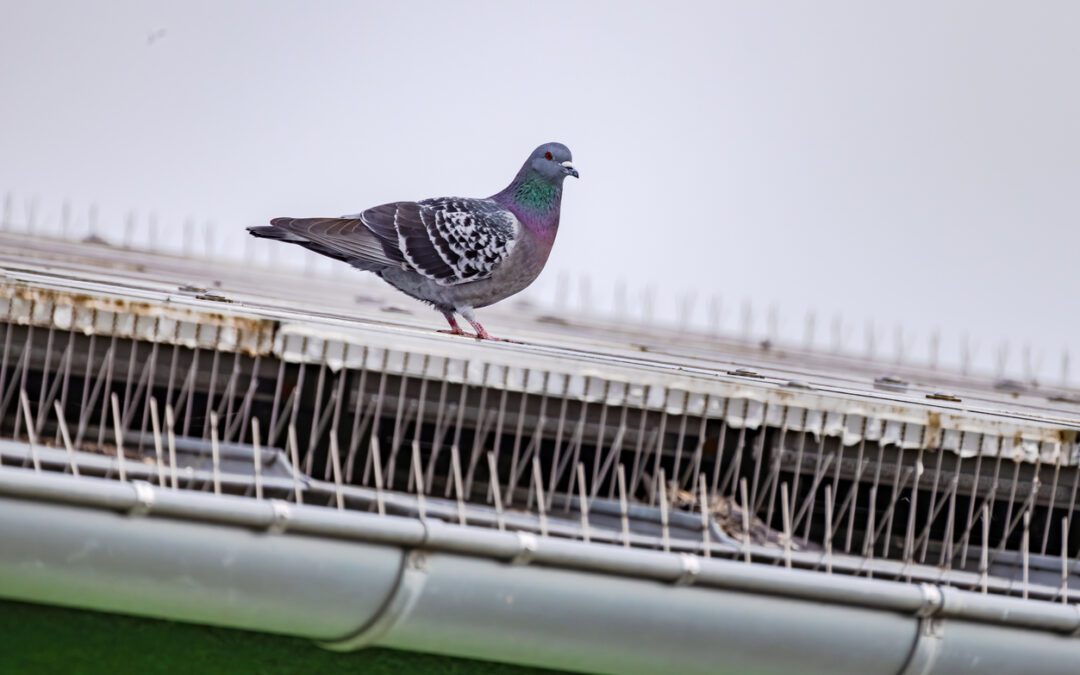
by Pigeon Patrol | Jul 9, 2024 | Bird Netting
A hospital has postponed dozens of procedures after pigeons nesting in the roof contaminated a sterile room.
On Friday staff entering a theatre’s sterile room in West Suffolk Hospital in Bury St Edmunds noticed the birds above the ceiling.
Faeces had fallen through the joins of some ceiling tiles leading to disruption of procedures.
A spokesperson for West Suffolk NHS Foundation Trust that runs the hospital said pest control had been called and it was aiming to resume normal service early next week.
“As soon as staff became aware of what had happened the sterile storage room was immediately closed,” they explained.
“No contaminated equipment has been used and our sterile services team are working hard to re-sterilise all the equipment and deep clean the storage room.”
They added that at no point did the birds enter the sterile storage room or operating theatres.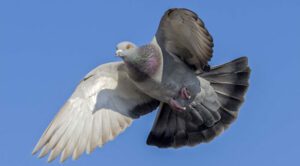
On Monday, 25 patients had their procedures postponed but emergency, cancer and urgent procedures are continuing as normal.
“Whilst we’ve had to postpone some planned procedures, our teams are working hard to minimise the impact on patients and to re-sterilise the equipment and the storage room as soon as possible,” the spokesperson added.
The roof has since been closed off so the birds cannot re-enter.
Staff working in the sterile services team are also working extended hours to work through a backlog of re-sterilising equipment in the room.
Follow Suffolk news on Facebook, Instagram and X. Got a story? Email eastofenglandnews@bbc.co.uk or
Pigeon Patrol
Pigeon Patrol Products & Services is the leading manufacturer and distributor of bird deterrent (control) products in Canada. Pigeon Patrol products have solved pest bird problems in industrial, commercial, and residential settings since 2000, by using safe and humane bird deterrents with only bird and animal friendly solutions. At Pigeon Patrol, we manufacture and offer a variety of bird deterrents, ranging from Ultra-flex Bird Spikes with UV protection, Bird Netting, 4-S Bird Gel and the best Ultrasonic and audible sound devices on the market today.
Canada’s top wholesaler for bird deterrent products for twelve consecutive years.
Contact us at 1- 877– 4– NO-BIRD, (604) 585-9279 or visit our website at https://www.pigeonpatrol.ca/
Bird Gone, Pigeon Gone, Pigeon problems, pigeon spikes, 1-877-4NO-BIRD, 4-S Gel, Bird Control, Pigeon Control, bird repellent, Bird Spikes, sonic bird repellent, stainless steel bird spikes, bird spikes Vancouver, Ultra Sonic Bird Control, Bird Netting, Plastic Bird Spikes, Canada bird spike deterrents, Pigeon Pests, B Gone Pigeon, Pigeon Patrol, pest controller, pest control operator, pest control technician, Pigeon Control Products, humane pigeon spikes, pigeon deterrents, pigeon traps, Pigeon repellents, Sound & Laser Deterrents, wildlife control, raccoon, skunk, squirrel deterrent, De-Fence Spikes, Dragons Den, Pigeon, Pigeon Patrol, Pigeons Roosting, Vancouver Pigeon Control, Bird Spikes, Bird Control, Bird Deterrent, Pigeon Deterrent, Surrey Pigeon Control, Pest, Seagull deterrent Vancouver Pigeon Blog, Birds Inside Home De-fence, Pigeon Nesting, Bird Droppings, Pigeon Dropping, woodpecker control, Keep The Birds Away, Birds/rats, seagull, pigeon, woodpecker, dove, sparrow, pidgeon control, pidgeon problem, pidgeon control, flying rats, pigeon Problems, bird netting, bird gel, bird spray, bird nails, bird guard, Pigeon control, Bird deterrents, Pigeon deterrents, Bird control, solutions, Pigeon prevention, Pigeon repellent, Bird proofing, Pest bird management, Pigeon spikes, Bird netting, Humane bird control, Bird exclusion, Urban bird control, Anti-roosting devices, Pigeon removal, Bird barriers
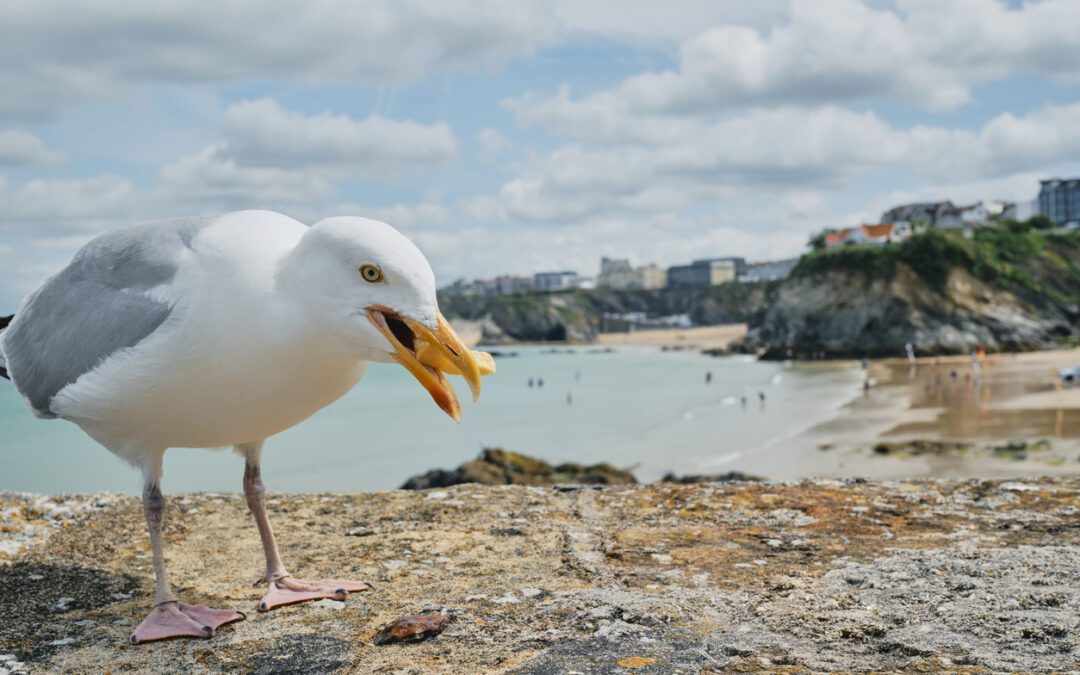
by Pigeon Patrol | Jul 9, 2024 | Bird Netting
In May 1850, a 20-year-old Potawatomi tribal leader named Simon Pokagon was camping at the headwaters of Michigan’s Manistee River during trapping season when a far-off gurgling sound startled him. It seemed as if “an army of horses laden with sleigh bells was advancing through the deep forests towards me,” he later wrote. “As I listened more intently, I concluded that instead of the tramping of horses it was distant thunder; and yet the morning was clear, calm, and beautiful.” The mysterious sound came “nearer and nearer,” until Pokagon deduced its source: “While I gazed in wonder and astonishment, I beheld moving toward me in an unbroken front millions of pigeons, the first I had seen that season.”
These were passenger pigeons, Ectopistes migratorius, at the time the most abundant bird in North America and possibly the world. Throughout the 19th century, witnesses had described similar sightings of pigeon migrations: how they took hours to pass over a single spot, darkening the firmament and rendering normal conversation inaudible. Pokagon remembered how sometimes a traveling flock, arriving at a deep valley, would “pour its living mass” hundreds of feet into a downward plunge. “I have stood by the grandest waterfall of America,” he wrote, “yet never have my astonishment, wonder, and admiration been so stirred as when I have witnessed these birds drop from their course like meteors from heaven.”
Pokagon recorded these memories in 1895, more than four decades after his Manistee River observation. By then he was in the final years of his life. Passenger pigeons, too, were in their final years. In 1871 their great communal nesting sites had covered 850 square miles of Wisconsin’s sandy oak barrens—136 million breeding adults, naturalist A.W. Schorger later estimated. After that the population plummeted until, by the mid-1890s, wild flock sizes numbered in the dozens rather than the hundreds of millions (or even billions). Then they disappeared altogether, except for three captive breeding flocks spread across the Midwest. About September 1, 1914, the last known passenger pigeon, a female named Martha, died at the Cincinnati Zoo. She was roughly 29 years old, with a palsy that made her tremble. Not once in her life had she laid a fertile egg.
This year marks the 100th anniversary of the passenger pigeon’s extinction. In the intervening years, researchers have agreed that the bird was hunted out of existence, victimized by the fallacy that no amount of exploitation could endanger a creature so abundant. Between now and the end of the year, bird groups and museums will commemorate the centenary in a series of conferences, lectures, and exhibits. Most prominent among them is Project Passenger Pigeon, a wide-ranging effort by a group of scientists, artists, museum curators, and other bird lovers. While their focus is on public education, an unrelated organization called Revive & Restore is attempting something far more ambitious and controversial: using genetics to bring the bird back.
Project Passenger Pigeon’s leaders hope that by sharing the pigeon’s story, they can impress upon adults and children alike our critical role in environmental conservation. “It’s surprising to me how many educated people I talk to who are completely unaware that the passenger pigeon even existed,” says ecologist David Blockstein, senior scientist at the National Council for Science and the Environment. “Using the centenary is a way to contemplate questions like, ‘How was it possible that this extinction happened?’ and ‘What does it say about contemporary issues like climate change?’ ”
They were evolutionary geniuses. Traveling in fast, gargantuan flocks throughout the eastern and midwestern United States and Canada—the males slate-blue with copper undersides and hints of purple, the females more muted—passenger pigeons would search out bumper crops of acorns and beechnuts. These they would devour, using their sheer numbers to ward off enemies, a strategy known as “predator satiation.” They would also outcompete other nut lovers—not only wild animals but also domestic pigs that had been set loose by farmers to forage.
In forest and city alike, an arriving flock was a spectacle—“a feathered tempest,” in the words of conservationist Aldo Leopold. One 1855 account from Columbus, Ohio, described a “growing cloud” that blotted out the sun as it advanced toward the city. “Children screamed and ran for home,” it said. “Women gathered their long skirts and hurried for the shelter of stores. Horses bolted. A few people mumbled frightened words about the approach of the millennium, and several dropped on their knees and prayed.” When the flock had passed over, two hours later, “the town looked ghostly in the now-bright sunlight that illuminated a world plated with pigeon ejecta.”
Nesting birds took over whole forests, forming what John James Audubon in 1831 called “solid masses as large as hogs-heads.” Observers reported trees crammed with dozens of nests apiece, collectively weighing so much that branches would snap off and trunks would topple. In 1871 some hunters coming upon the morning exodus of adult males were so overwhelmed by the sound and spectacle that some of them dropped their guns. “Imagine a thousand threshing machines running under full headway, accompanied by as many steamboats groaning off steam, with an equal quota of R.R. trains passing through covered bridges—imagine these massed into a single flock, and you possibly have a faint conception of the terrific roar,” the Commonwealth, a newspaper in Fond du Lac, Wisconsin, reported of that encounter.
The birds weren’t just noisy. They were tasty, too, and their arrival guaranteed an abundance of free protein. “You think about this especially with the spring flocks,” says Blockstein, the ecologist. “The people on the frontiers have survived the winter. They’ve been eating whatever food they’ve been able to preserve from the year before. Then, all of a sudden, here’s all this fresh meat flying by you. It must have been a time for great rejoicing: The pigeons are here!” (Not everyone shouted with joy. The birds also devoured crops, frustrating farmers and prompting Baron de Lahontan, a French soldier who explored North America during the 17th century, to write that “the Bishop has been forc’d to excommunicate ’em oftner than once, upon the account of the Damage they do to the Product of the Earth.”)
The flocks were so thick that hunting was easy—even waving a pole at the low-flying birds would kill some. Still, harvesting for subsistence didn’t threaten the species’ survival. But after the Civil War came two technological developments that set in motion the pigeon’s extinction: the national expansions of the telegraph and the railroad. They enabled a commercial pigeon industry to blossom, fueled by professional sportsmen who could learn quickly about new nestings and follow the flocks around the continent. “Hardly a train arrives that does not bring hunters or trappers,” reported Wisconsin’s Kilbourn City Mirror in 1871. “Hotels are full, coopers are busy making barrels, and men, women, and children are active in packing the birds or filling the barrels. They are shipped to all places on the railroad, and to Milwaukee, Chicago, St. Louis, Cincinnati, Philadelphia, New York, and Boston.”
The professionals and amateurs together outflocked their quarry with brute force. They shot the pigeons and trapped them with nets, torched their roosts, and asphyxiated them with burning sulfur. They attacked the birds with rakes, pitchforks, and potatoes. They poisoned them with whiskey-soaked corn. Learning of some of these methods, Potawatomi leader Pokagon despaired. “These outlaws to all moral sense would touch a lighted match to the bark of the tree at the base, when with a flash—more like an explosion—the blast would reach every limb of the tree,” he wrote of an 1880 massacre, describing how the scorched adults would flee and the squabs would “burst open upon hitting the ground.” Witnessing this, Pokagon wondered what type of divine punishment might be “awaiting our white neighbors who have so wantonly butchered and driven from our forests these wild pigeons, the most beautiful flowers of the animal creation of North America.”
Ultimately, the pigeons’ survival strategy—flying in huge predator-proof flocks—proved their undoing. “If you’re unfortunate enough to be a species that concentrates in time and space, you make yourself very, very vulnerable,” says Stanley Temple, a professor emeritus of conservation at the University of Wisconsin.
Passenger pigeons might have even survived the commercial slaughter if hunters weren’t also disrupting their nesting grounds—killing some adults, driving away others, and harvesting the squabs. “It was the double whammy,” says Temple. “It was the demographic nightmare of overkill and impaired reproduction. If you’re killing a species far faster than they can reproduce, the end is a mathematical certainty.” The last known hunting victim was “Buttons,” a female, which was shot in Pike County, Ohio, in 1900 and mounted by the sheriff ’s wife (who used two buttons in lieu of glass eyes). Almost seven decades later a man named Press Clay Southworth took responsibility for shooting Buttons, not knowing her species, when he was a boy.
Even as the pigeons’ numbers crashed, “there was virtually no effort to save them,” says Joel Greenberg, a research associate with Chicago’s Peggy Notebaert Nature Museum and the Field Museum. “People just slaughtered them more intensely. They killed them until the very end.”
Contemporary environmentalism arrived too late to prevent the passenger pigeon’s demise. But the two phenomena share a historical connection. “The extinction was part of the motivation for the birth of modern 20th century conservation,” says Temple. In 1900, even before Martha’s death in the Cincinnati Zoo, Republican Congressman John F. Lacey of Iowa introduced the nation’s first wildlife-protection law, which banned the interstate shipping of unlawfully killed game. “The wild pigeon, formerly in flocks of millions, has entirely disappeared from the face of the earth,” Lacey said on the House floor. “We have given an awful exhibition of slaughter and destruction, which may serve as a warning to all mankind. Let us now give an example of wise conservation of what remains of the gifts of nature.” That year Congress passed the Lacey Act, followed by the tougher Weeks-McLean Act in 1913 and, five years later, the Migratory Bird Treaty Act, which protected not just birds but also their eggs, nests, and feathers.
The passenger pigeon story continued to resonate throughout the century. In the 1960s populations of the dickcissel, a sparrow-like neotropical migrant, began crashing, and some ornithologists predicted its extinction by 2000. It took decades to uncover the reason: During winters, the entire world population of the grasslands bird converged into fewer than a dozen huge flocks, which settled into the llanos of Venezuela. There, rice farmers who considered the dickcissels a pest illegally crop-dusted their roosts with pesticides. “They were literally capable, in a matter of minutes, of wiping out double-digit percentages of the world’s population,” says Temple, who studied the bird. “The accounts are very reminiscent of the passenger pigeon.” As conservationists negotiated with rice growers during the 1990s—using research that showed the dickcissel was not an economic threat—they also invoked the passenger pigeon extinction to rally their colleagues in North America and Europe. The efforts paid off: The bird’s population has stabilized, albeit at a lower level.
Today the pigeon inspires artists and scientists alike. Sculptor Todd McGrain, creative director of the Lost Bird Project, has crafted enormous bronze memorials of five extinct birds; his passenger pigeon sits at the Grange Insurance Audubon Center in Columbus, Ohio. The Lost Bird Project has also designed an origami pigeon (like the one bound into this magazine) and says thousands have been folded—a symbolic recreation of the historic flocks.
The most controversial effort inspired by the extinction is a plan to bring the passenger pigeon back to life. In 2012 Long Now Foundation president Stewart Brand (a futurist best known for creating the Whole Earth Catalog) and genetics entrepreneur Ryan Phelan cofounded Revive & Restore, a project that plans to use the tools of molecular biology to resurrect extinct animals. The project’s “flagship” species is the passenger pigeon, which Brand learned about from his mother when he was growing up in Illinois. Revive & Restore hopes to start with the band-tailed pigeon, a close relative, and “change its genome into the closest thing to the genetic code of the passenger pigeon that we can make,” says research consultant Ben Novak. The resulting creature will not have descended from the original species. “[But] if I give it to a team of scientists who have no idea that it was bioengineered, and I say, ‘Classify this,’ if it looks and behaves like a passenger pigeon, the natural historians are going to say, ‘This is Ectopistes migratorius.’ And if the genome plops right next to all the other passenger pigeon genomes you’ve sequenced from history, then a geneticist will have to say, ‘This is a passenger pigeon. It’s not a bnd-tailed pigeon.’ ”
Revive & Restore plans to breed the birds in captivity before returning them to the wild in the 2030s. Novak says the initial research indicates that North American forests could support a reintroduced population. He hopes animals brought back from extinction—not just birds but eventually also big creatures like woolly mammoths—will draw the public to zoos in droves, generating revenues that can be used to protect wildlife. “De-extinction [can] get the public interested in conservation in a way that the last 40 years of doom and gloom has beaten out of them,” he says.
Other experts aren’t so sanguine. They question whether the hybrid animal could really be called a passenger pigeon. They doubt the birds could survive without the enormous flocks of the 19th century. And they question Novak’s belief that the forests could safely absorb the reintroduction. “The ecosystem has moved on,” says Temple. “If you put the organism back in, it could be disruptive to a new dynamic equilibrium. It’s not altogether clear that putting one of these extinct species from the distant past back into an ecosystem today would be much more than introducing an exotic species. It would have repercussions that we’re probably not fully capable of predicting.”
Blockstein says he wanted to use the 100th anniversary as a “teachable moment.” Which eventually led him to Greenberg, the Chicago researcher, who had been thinking independently about 2014’s potential. The two men reached out to others until more than 150 institutions were on board for a yearlong commemoration: museums, universities, conservation groups (including Audubon state offices and local chapters), libraries, arts organizations, government agencies, and nature and history centers.
Project Passenger Pigeon has since evolved to be a multimedia circus of sorts. Greenberg has published A Feathered River Across the Sky, a book-length account of the pigeon’s glory days and demise. Filmmaker David Mrazek plans to release a documentary called From Billions to None. At least four conferences will address the pigeon’s extinction, as will several exhibits. “We’re trying to take advantage of every possible mechanism to put the story in front of audiences that may not necessarily be birdwatchers, may not necessarily even be conservationists,” says Temple.
The commemoration goes beyond honoring one species. Telling the pigeon’s story can serve as a jumping-off point for exploring the many ways humans influence, and often jeopardize, their own environment. Today an estimated 13 percent of birds are threatened, according to the International Union for Conservation of Nature. So are 25 percent of mammals and 41 percent of amphibians, in large part because of human activity. Hydropower and road construction imperil China’s giant pandas. The northern bald ibis, once abundant in the Middle East, has been driven almost to extinction by hunting, habitat loss, and the difficulties of doing conservation work in war-torn Syria. Hunting and the destruction of wetlands for agriculture drove the population of North America’s tallest bird, the whooping crane, into the teens before stringent protections along the birds’ migratory route and wintering grounds helped the wild flock build back to a few hundred. Little brown bats are dying off in the United States and Canada from a fungus that might have been imported from Europe by travelers. Of some 300 species of freshwater mussels in North America, fully 70 percent are extinct, imperiled, or vulnerable, thanks to the impacts of water pollution from logging, dams, farm runoff, and shoreline development. Rising sea temperatures have disrupted the symbiotic relationship between corals and plant-like zooxanthellae, leading to a deadly phenomenon called coral bleaching. One-third of the world’s reef-building coral species are now threatened.
If public disinterest helped exterminate the passenger pigeon, then one modern-day parallel might be public skepticism about climate change. In an October poll by the Pew Research Center for the People and the Press, only 44 percent of Americans agreed there was solid evidence that the earth is warming because of human activity, as scientists now overwhelmingly believe. Twenty-six percent didn’t think there was significant proof of global warming at all. In another Pew poll, conducted last spring, 40 percent of Americans considered climate change a major national threat, compared with 65 percent of Latin Americans and slimmer majorities in Europe, Africa, and the Asia-Pacific region.
This denial of both the threat and our own responsibility sounds eerily familiar to those who study 19th century attitudes toward wildlife. “Certainly if you read some of the writings of the time,” says Blockstein, “there were very few people who put stock in the idea that humanity could have any impact on the passenger pigeons.” (Audubon himself dismissed those who believed that “such dreadful havoc” as hunting would “soon put an end to the species.”) Today attitudes toward climate change sound similar, continues Blockstein. “It’s the same kind of argument: ‘The world is so big and the atmosphere is so big; how could we possibly have an impact on the global climate?’”
Even the political rhetoric of those who don’t want to address climate change aggressively has 19th century echoes. “The industry that paid people to kill these birds said, ‘If you restrict the killing, people will lose their jobs,’ ” notes Greenberg—“the very same things you hear today.”
Project Passenger Pigeon might not change the minds of hardcore climate skeptics. For the rest of us, though, it could serve as a call to take responsibility for how our personal and collective actions affect wildlife and climate. Maybe a close look at the history of human folly will keep us from repeating it.
Pigeon Patrol
Pigeon Patrol Products & Services is the leading manufacturer and distributor of bird deterrent (control) products in Canada. Pigeon Patrol products have solved pest bird problems in industrial, commercial, and residential settings since 2000, by using safe and humane bird deterrents with only bird and animal friendly solutions. At Pigeon Patrol, we manufacture and offer a variety of bird deterrents, ranging from Ultra-flex Bird Spikes with UV protection, Bird Netting, 4-S Bird Gel and the best Ultrasonic and audible sound devices on the market today.
Canada’s top wholesaler for bird deterrent products for twelve consecutive years.
Contact us at 1- 877– 4– NO-BIRD, (604) 585-9279 or visit our website at https://www.pigeonpatrol.ca/
Bird Gone, Pigeon Gone, Pigeon problems, pigeon spikes, 1-877-4NO-BIRD, 4-S Gel, Bird Control, Pigeon Control, bird repellent, Bird Spikes, sonic bird repellent, stainless steel bird spikes, bird spikes Vancouver, Ultra Sonic Bird Control, Bird Netting, Plastic Bird Spikes, Canada bird spike deterrents, Pigeon Pests, B Gone Pigeon, Pigeon Patrol, pest controller, pest control operator, pest control technician, Pigeon Control Products, humane pigeon spikes, pigeon deterrents, pigeon traps, Pigeon repellents, Sound & Laser Deterrents, wildlife control, raccoon, skunk, squirrel deterrent, De-Fence Spikes, Dragons Den, Pigeon, Pigeon Patrol, Pigeons Roosting, Vancouver Pigeon Control, Bird Spikes, Bird Control, Bird Deterrent, Pigeon Deterrent, Surrey Pigeon Control, Pest, Seagull deterrent Vancouver Pigeon Blog, Birds Inside Home De-fence, Pigeon Nesting, Bird Droppings, Pigeon Dropping, woodpecker control, Keep The Birds Away, Birds/rats, seagull, pigeon, woodpecker, dove, sparrow, pidgeon control, pidgeon problem, pidgeon control, flying rats, pigeon Problems, bird netting, bird gel, bird spray, bird nails, bird guard, Pigeon control, Bird deterrents, Pigeon deterrents, Bird control, solutions, Pigeon prevention, Pigeon repellent, Bird proofing, Pest bird management, Pigeon spikes, Bird netting, Humane bird control, Bird exclusion, Urban bird control, Anti-roosting devices, Pigeon removal, Bird barriers
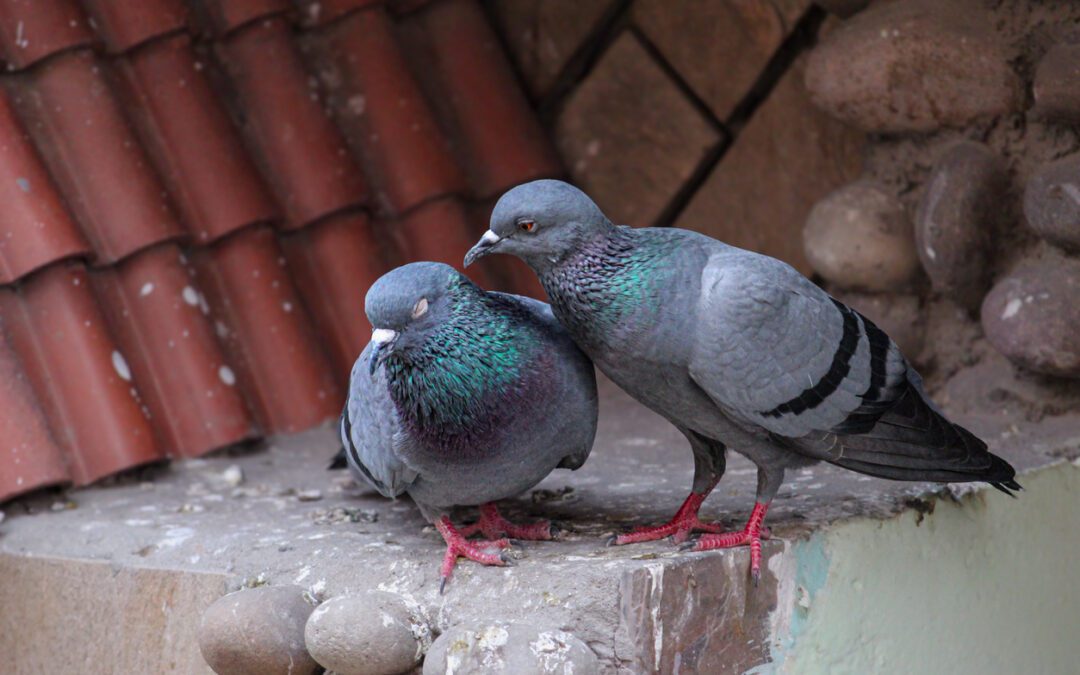
by Pigeon Patrol | Jul 8, 2024 | Bird Netting
More than 2,000 people have signed a petition over concerns arouund the dead bird
A number of pigeons found dead in traps along SkyTrain routes in Vancouver have sparked concern from the public, but the pest control company that runs these traps says it has nothing to do with neglect.
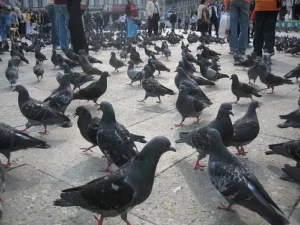
Commuter Zahra Ahmdz started a petition against transit operator TransLink in the summer of 2021 after noticing the traps inside the Stadium-Chinatown station on her way to work, and what she said was very clearly multiple dead pigeons inside.
“It was very, very shocking. I didn’t think this would happen in Canada,” she said.
The traps are one of several methods TransLink uses to control the population of pigeons at SkyTrain stations, but the birds are never supposed to die inside. TransLink hires a pest control company to check the traps once a week, ensure there is adequate food and water inside and humanely kill any birds captured.
Media relations advisor Thor Diakow said it’s possible some pigeons did die inside the cages last summer, as TransLink was between pest control companies and didn’t maintain the cages itself in the meantime.
Ahmdz said the problem didn’t stopped there though.
Photos she said she took in March and May appear to show more dead pigeons inside the cages. And Ahmdz said after she complained to TransLink and the BC SPCA, small barriers were erected making it more difficult for her to see the birds.
“This is cruelty,” Ahmdz said.
The pest control company in charge of the cages disagrees. Atlas Pest And Wildlife Control has been working for TransLink since around November or December 2021, according to its president Raymond Arthurs. He readily admitted that they sometimes find pigeons dead inside the cages during their weekly checks, but said it’s not because of neglect on their part.
“Sometimes a hawk will get inside and kill them,” Arthurs said. “That’s kind of all natural.”
As for the barriers, Arthurs said they’re partially to stop people from tampering with the cages and partially to protect the birds from water dripping from the ceiling or other elements.
He said if the weather drops below zero, they leave the cages open as they know the water bowls inside will freeze over. They don’t have a system in place yet for hot weather, as they haven’t worked a summer for TransLink yet, Arthurs added.
He said he couldn’t comment on the exact number of pigeons that have died in his company’s cages. They keep weekly records of their activities, but Arthurs said only TransLink can decide who to provide them to. TransLink agreed to give them to Black Press Media, but said they weren’t available at the time of publication.
A move toward birth control Both emphasized that they are starting to move away from traps and towards birth control methods.
The BC SPCA pushed TransLink to pilot test OvoControl birth control in several stations for 18 months in 2019 and 2020 after similar complaints about trapped pigeons were brought forward.
BC SPCA chief scientific officer Sara Dubois said the results were exactly what they expected – the population stabilized. She said she was disappointed when TransLink chose not to continue with the long-term solution.
More than a year later though, Diakow said TransLink is now recommitting to the method and will have permanent OvoControl dispensers in some SkyTrain stations come summer.
TransLink also uses bird spikes, netting and low-charge electric strips to deter pigeons from roosting in stations. Diakow said their main concern is the potential for bacterial infections from the birds’ droppings, but that pigeons are also one of a number of animals that regularly set off TransLink’s highly sensitive intrusion alarms.
In 2021, Diakow said wildlife set off the alarms 544 times, resulting in between 12 and 20 hours of transit delays. He said it’s impossible to know how many pigeons alone were responsible for.
Feeding wildlife is feeding the problem
He and Dubois said a large part of the problem is people drawing the pigeons to the stations.
“There’s these regulars that always show up and feed the birds,” Diakow said.
Often times, he said they do so just off TransLink property, so staff can’t actually do anything about it.
Dubois said she’s hopeful Vancouver’s new bylaw banning feeding wildlife in city parks could help, though. She said she’d like to see TransLink work with bylaw on solutions.
Diakow said they’re looking into putting up signage at the stations.
READ ALSO: Unanimous approval for ban on feeding any wild animals in Vancouver parks
As for Ahmdz, she said she’d like to see Vancouver create pigeon aviaries as some cities in Europe have done. She said seeing the cages on her commute everyday is having a serious impact on her mental health.
“The entire day at work I have anxiety,” she said.
Her petition has been signed by more than 2,000 people as of Thursday afternoon.
Pigeon Patrol
Pigeon Patrol Products & Services is the leading manufacturer and distributor of bird deterrent (control) products in Canada. Pigeon Patrol products have solved pest bird problems in industrial, commercial, and residential settings since 2000, by using safe and humane bird deterrents with only bird and animal friendly solutions. At Pigeon Patrol, we manufacture and offer a variety of bird deterrents, ranging from Ultra-flex Bird Spikes with UV protection, Bird Netting, 4-S Bird Gel and the best Ultrasonic and audible sound devices on the market today.
Canada’s top wholesaler for bird deterrent products for twelve consecutive years.
Contact us at 1- 877– 4– NO-BIRD, (604) 585-9279 or visit our website at https://www.pigeonpatrol.ca/
Bird Gone, Pigeon Gone, Pigeon problems, pigeon spikes, 1-877-4NO-BIRD, 4-S Gel, Bird Control, Pigeon Control, bird repellent, Bird Spikes, sonic bird repellent, stainless steel bird spikes, bird spikes Vancouver, Ultra Sonic Bird Control, Bird Netting, Plastic Bird Spikes, Canada bird spike deterrents, Pigeon Pests, B Gone Pigeon, Pigeon Patrol, pest controller, pest control operator, pest control technician, Pigeon Control Products, humane pigeon spikes, pigeon deterrents, pigeon traps, Pigeon repellents, Sound & Laser Deterrents, wildlife control, raccoon, skunk, squirrel deterrent, De-Fence Spikes, Dragons Den, Pigeon, Pigeon Patrol, Pigeons Roosting, Vancouver Pigeon Control, Bird Spikes, Bird Control, Bird Deterrent, Pigeon Deterrent, Surrey Pigeon Control, Pest, Seagull deterrent Vancouver Pigeon Blog, Birds Inside Home De-fence, Pigeon Nesting, Bird Droppings, Pigeon Dropping, woodpecker control, Keep The Birds Away, Birds/rats, seagull, pigeon, woodpecker, dove, sparrow, pidgeon control, pidgeon problem, pidgeon control, flying rats, pigeon Problems, bird netting, bird gel, bird spray, bird nails, bird guard, Pigeon control, Bird deterrents, Pigeon deterrents, Bird control, solutions, Pigeon prevention, Pigeon repellent, Bird proofing, Pest bird management, Pigeon spikes, Bird netting, Humane bird control, Bird exclusion, Urban bird control, Anti-roosting devices, Pigeon removal, Bird barriers
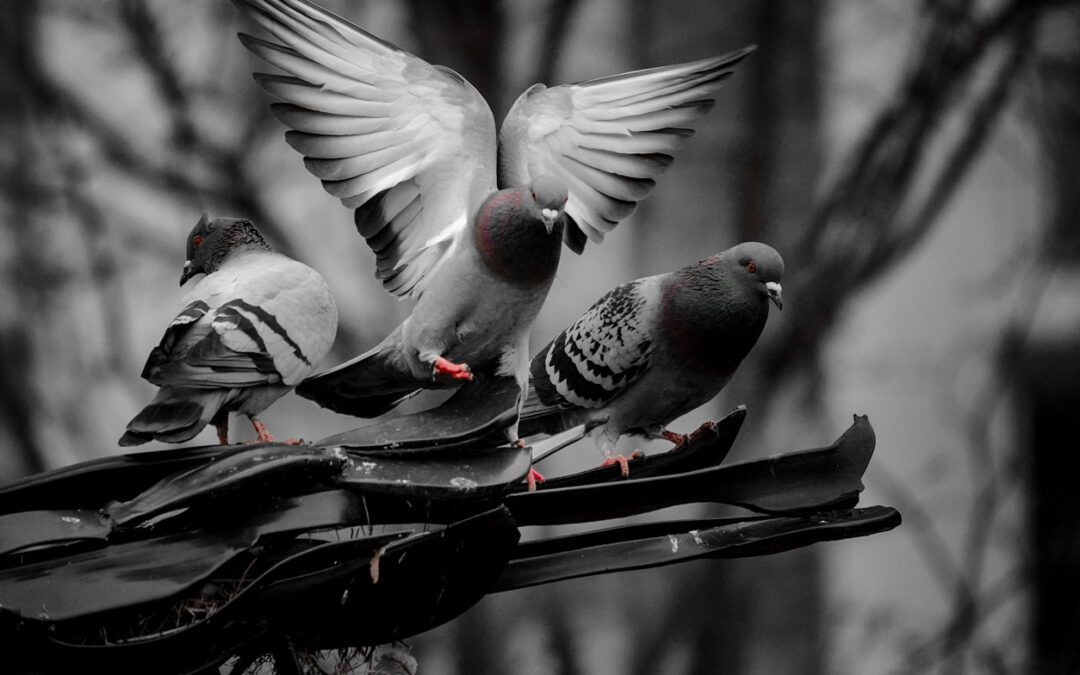
by Pigeon Patrol | Jul 8, 2024 | Bird Netting
WANATAH, Ind. — A fire at a northern Indiana facility has killed nearly 2,000 racing pigeons from around the world that were housed there for a race.
Hoosier Loft owners Jim and Kelly Ward say the fire swept through the loft late Saturday or early Sunday in the LaPorte County town of Wanatah, about 60 miles (96 kilometres) east of Chicago.
The (Northwest Indiana) Times reports the fire prematurely ended the 2019 Hoosier Classic Million Dollar One Loft Race by killing the birds ahead of Monday’s final race from Matthews, Missouri, back to Wanatah.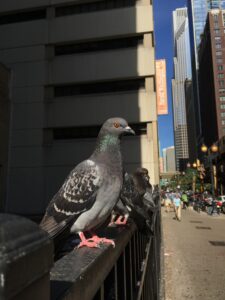
The Wards are organizers of the race, which is one of competitive pigeon racing’s premier events. They said on the race’s website that they’re “completely devastated” by the fire.
The couple says LaPorte County authorities are investigating the fire.
a
Pigeon Patrol
Pigeon Patrol Products & Services is the leading manufacturer and distributor of bird deterrent (control) products in Canada. Pigeon Patrol products have solved pest bird problems in industrial, commercial, and residential settings since 2000, by using safe and humane bird deterrents with only bird and animal friendly solutions. At Pigeon Patrol, we manufacture and offer a variety of bird deterrents, ranging from Ultra-flex Bird Spikes with UV protection, Bird Netting, 4-S Bird Gel and the best Ultrasonic and audible sound devices on the market today.
Canada’s top wholesaler for bird deterrent products for twelve consecutive years.
Contact us at 1- 877– 4– NO-BIRD, (604) 585-9279 or visit our website at https://www.pigeonpatrol.ca/
Bird Gone, Pigeon Gone, Pigeon problems, pigeon spikes, 1-877-4NO-BIRD, 4-S Gel, Bird Control, Pigeon Control, bird repellent, Bird Spikes, sonic bird repellent, stainless steel bird spikes, bird spikes Vancouver, Ultra Sonic Bird Control, Bird Netting, Plastic Bird Spikes, Canada bird spike deterrents, Pigeon Pests, B Gone Pigeon, Pigeon Patrol, pest controller, pest control operator, pest control technician, Pigeon Control Products, humane pigeon spikes, pigeon deterrents, pigeon traps, Pigeon repellents, Sound & Laser Deterrents, wildlife control, raccoon, skunk, squirrel deterrent, De-Fence Spikes, Dragons Den, Pigeon, Pigeon Patrol, Pigeons Roosting, Vancouver Pigeon Control, Bird Spikes, Bird Control, Bird Deterrent, Pigeon Deterrent, Surrey Pigeon Control, Pest, Seagull deterrent Vancouver Pigeon Blog, Birds Inside Home De-fence, Pigeon Nesting, Bird Droppings, Pigeon Dropping, woodpecker control, Keep The Birds Away, Birds/rats, seagull, pigeon, woodpecker, dove, sparrow, pidgeon control, pidgeon problem, pidgeon control, flying rats, pigeon Problems, bird netting, bird gel, bird spray, bird nails, bird guard, Pigeon control, Bird deterrents, Pigeon deterrents, Bird control, solutions, Pigeon prevention, Pigeon repellent, Bird proofing, Pest bird management, Pigeon spikes, Bird netting, Humane bird control, Bird exclusion, Urban bird control, Anti-roosting devices, Pigeon removal, Bird barriers
rd
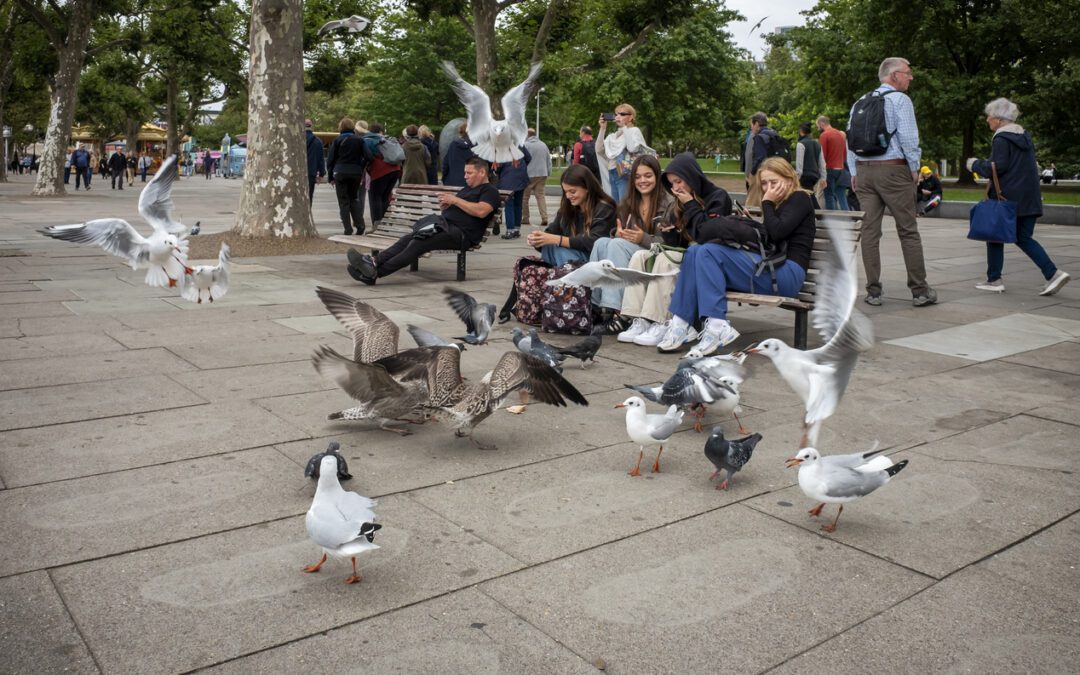
by Pigeon Patrol | Jul 8, 2024 | Bird Netting
2,000 Racing Pigeons Die In LaPorte County Loft Fire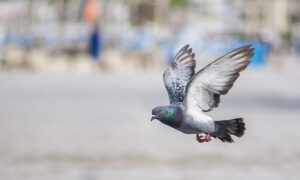
EMILIE SYBERGFollow us on Twitter Find us on Facebook
Article origination WBAA-AM
Two thousand racing pigeons died in a fire at Hoosier Loft in LaPorte County Sunday. The fire destroyed the facility, seen here in a photo from the Hoosier Loft website taken before the fire. – Courtesy Hoosier Loft
Two thousand racing pigeons died in a fire at Hoosier Loft in LaPorte County Sunday. The fire destroyed the facility, seen here in a photo from the Hoosier Loft website taken before the fire.
Two thousand racing pigeons burned to death in a bird loft in LaPorte County early Sunday. The fire, which destroyed the facility, housed birds from around the world.
On their website, Hoosier Loft owners Jim and Kelly Ward say they are “heartbroken” about the fire, which effectively ended this year’s final weekend of the Hoosier Classic Million Dollar Race. They also combat claims from some breeders that the fire had been purposefully set.
“It is the 9/11 of pigeon racing in the world,” says Jim Gabler, an Illinois pigeon breeder.
Gabler estimates he had about 30 birds housed at Hoosier Loft during the blaze, and says he still thinks the Wards are trustworthy caregivers.
“I can only say they are the salt of the earth type of people that represent and protect our pigeons to the highest level possible,” Gabler says.
The racing pigeons were due to fly between Indiana and Missouri, with a half a million dollars going to the winning bird’s breeder.
The Wards say they are refunding race entry fees, and plan to host the race again in 2020.
Pigeon Patrol
Pigeon Patrol Products & Services is the leading manufacturer and distributor of bird deterrent (control) products in Canada. Pigeon Patrol products have solved pest bird problems in industrial, commercial, and residential settings since 2000, by using safe and humane bird deterrents with only bird and animal friendly solutions. At Pigeon Patrol, we manufacture and offer a variety of bird deterrents, ranging from Ultra-flex Bird Spikes with UV protection, Bird Netting, 4-S Bird Gel and the best Ultrasonic and audible sound devices on the market today.
Canada’s top wholesaler for bird deterrent products for twelve consecutive years.
Contact us at 1- 877– 4– NO-BIRD, (604) 585-9279 or visit our website at https://www.pigeonpatrol.ca/
Bird Gone, Pigeon Gone, Pigeon problems, pigeon spikes, 1-877-4NO-BIRD, 4-S Gel, Bird Control, Pigeon Control, bird repellent, Bird Spikes, sonic bird repellent, stainless steel bird spikes, bird spikes Vancouver, Ultra Sonic Bird Control, Bird Netting, Plastic Bird Spikes, Canada bird spike deterrents, Pigeon Pests, B Gone Pigeon, Pigeon Patrol, pest controller, pest control operator, pest control technician, Pigeon Control Products, humane pigeon spikes, pigeon deterrents, pigeon traps, Pigeon repellents, Sound & Laser Deterrents, wildlife control, raccoon, skunk, squirrel deterrent, De-Fence Spikes, Dragons Den, Pigeon, Pigeon Patrol, Pigeons Roosting, Vancouver Pigeon Control, Bird Spikes, Bird Control, Bird Deterrent, Pigeon Deterrent, Surrey Pigeon Control, Pest, Seagull deterrent Vancouver Pigeon Blog, Birds Inside Home De-fence, Pigeon Nesting, Bird Droppings, Pigeon Dropping, woodpecker control, Keep The Birds Away, Birds/rats, seagull, pigeon, woodpecker, dove, sparrow, pidgeon control, pidgeon problem, pidgeon control, flying rats, pigeon Problems, bird netting, bird gel, bird spray, bird nails, bird guard, Pigeon control, Bird deterrents, Pigeon deterrents, Bird control, solutions, Pigeon prevention, Pigeon repellent, Bird proofing, Pest bird management, Pigeon spikes, Bird netting, Humane bird control, Bird exclusion, Urban bird control, Anti-roosting devices, Pigeon removal, Bird barriers











